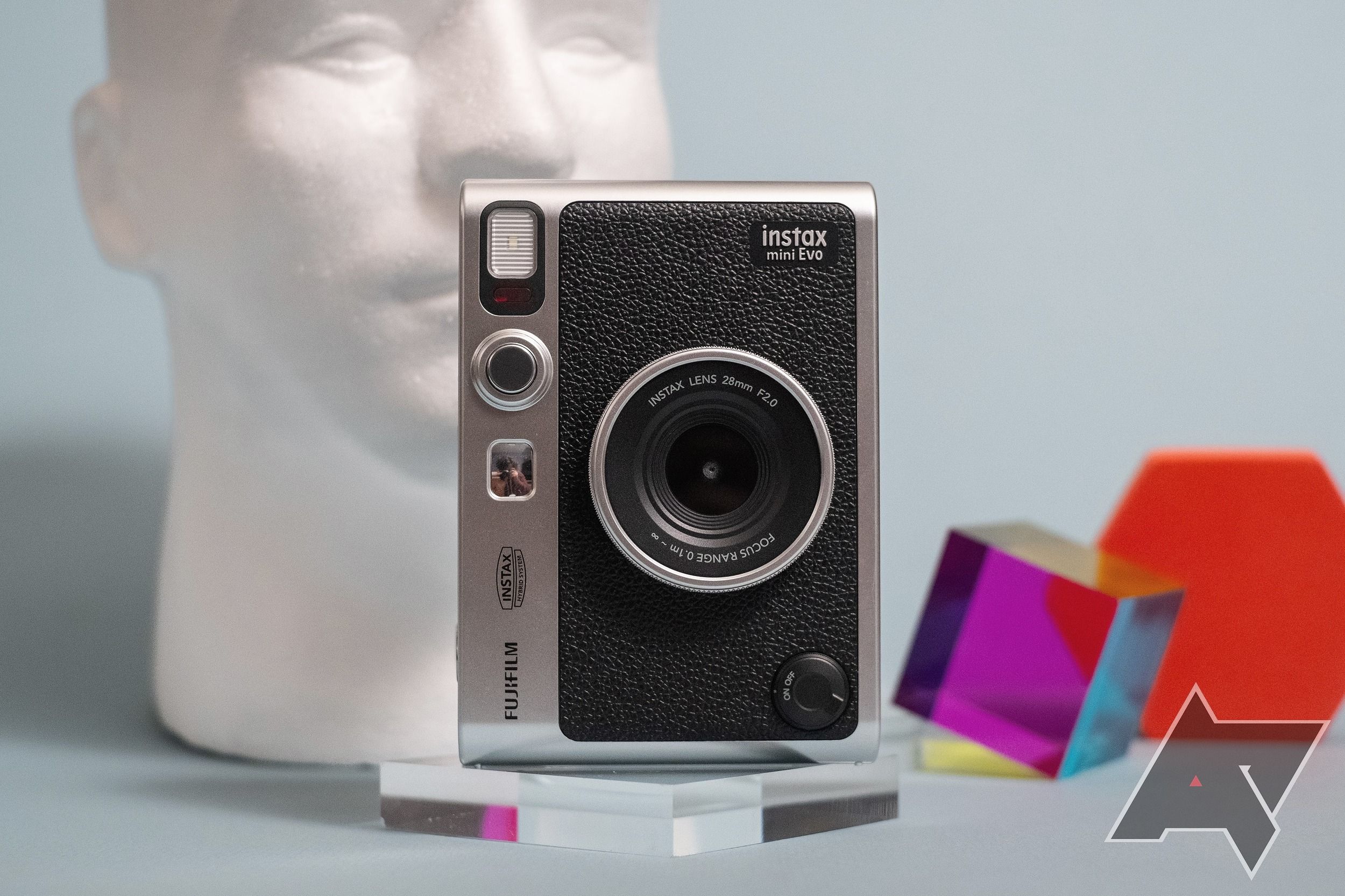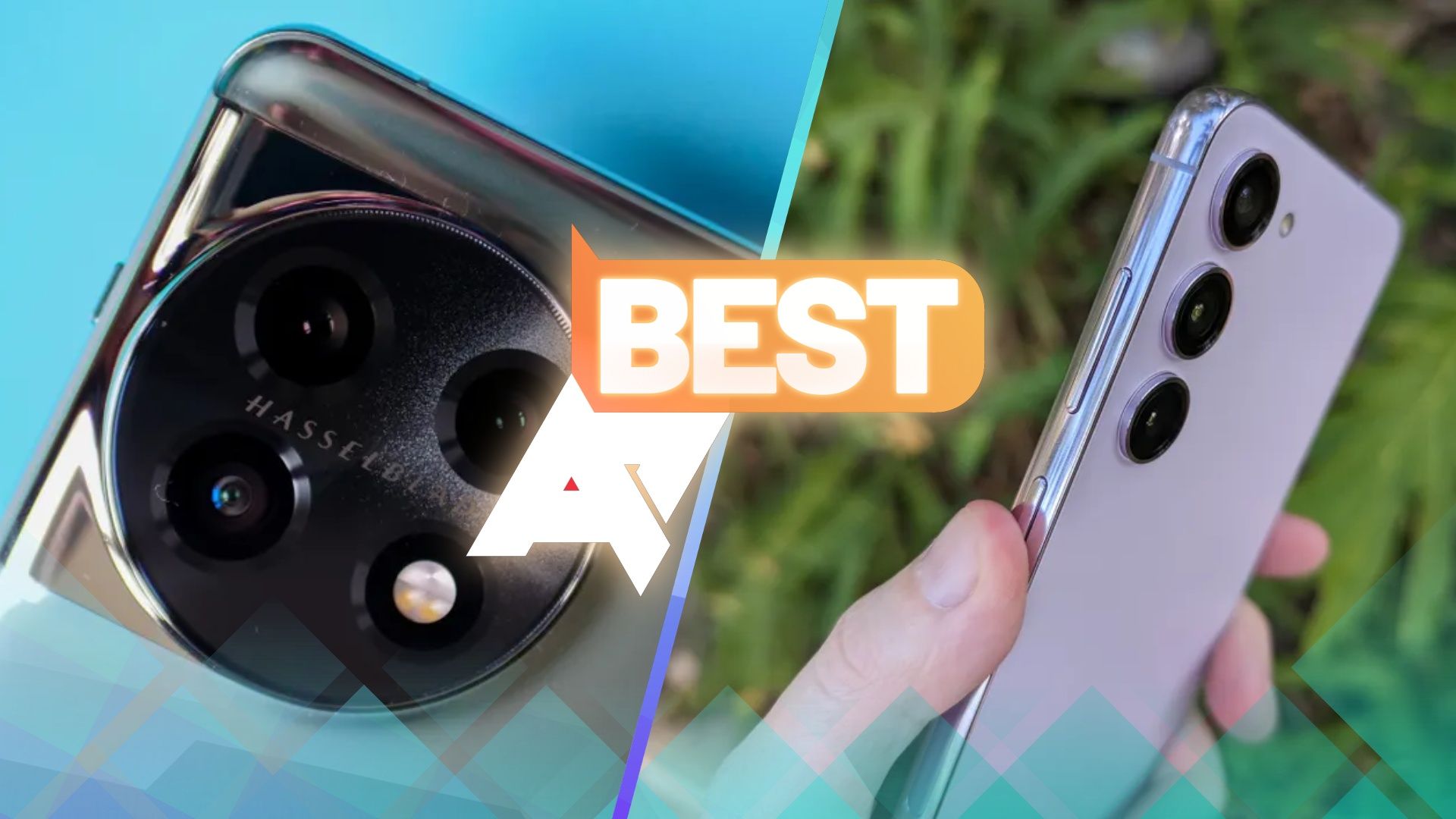Instant cameras are a great way to capture tangible reminders of the memorable moments in your life. They are perfect for parties, road trips, picnics, and more. With just a click of the shutter button, you can have a physical photograph in your hands. So, if you are ready to dive into the world of instant cameras, you’ll be happy to know there are quite a few options.
But finding the right option can be tricky. So, we have handpicked the best instant cameras to help you turn fleeting moments into keepsakes.
Our top instant camera picks
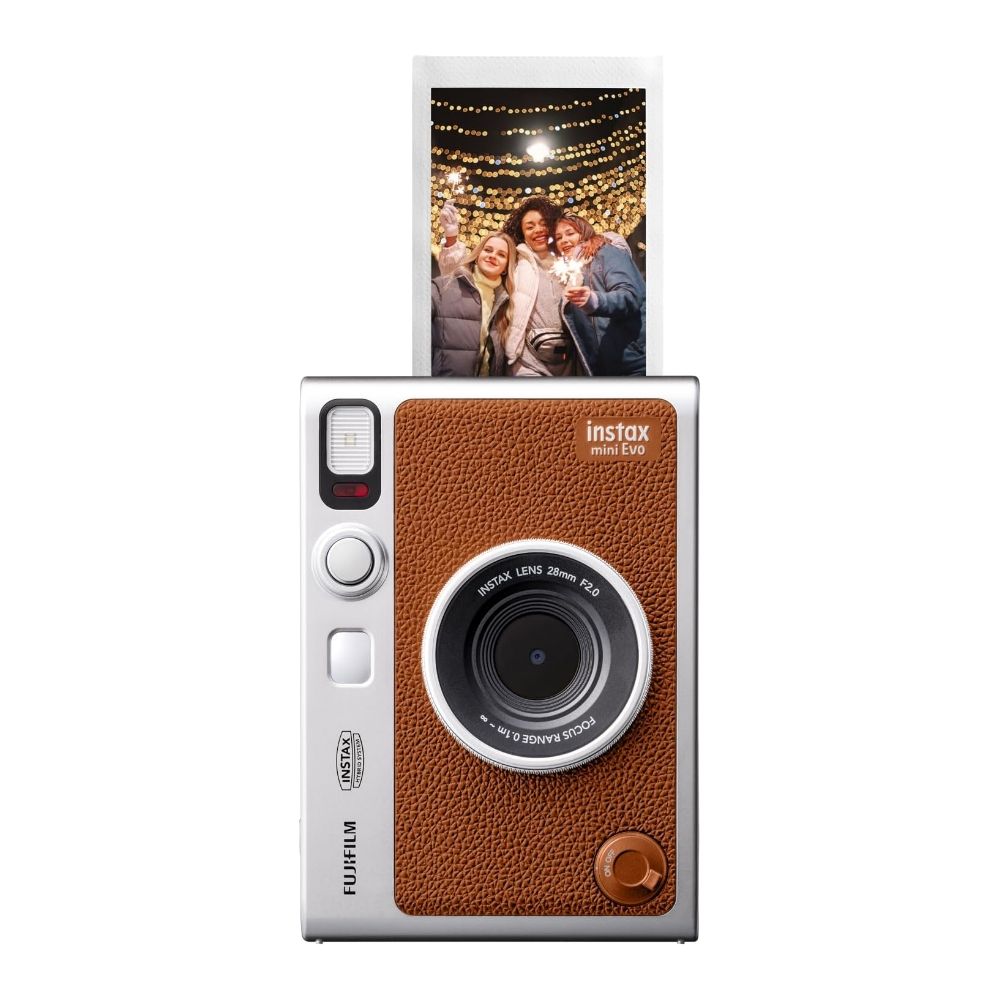
Fujifilm Instax Mini Evo
Balancing analog with digital
The Fujifilm Instax Mini Evo is an excellent hybrid instant camera that combines modern conveniences with a retro design. It’s perfect if you aren’t ready for a full analog experience.
- Can choose what to print
- Good battery life
- Lots of effects
- Limited internal storage
- No optical viewfinder
Part of Fujifilm’s popular Instax lineup, the Mini Evo is an excellent little instant camera that efficiently balances analog with digital. Although it’s essentially a digital camera combined with an instant printer, its beautiful retro design and vintage-looking dials and buttons give the feel of a film camera. Sadly, there is no optical viewfinder.
You can combine your creativity with 10 lens and 10 film effects to capture unique memories. You get an instant preview of your capture on the camera’s LCD screen. If you like the capture, you can choose to print it or keep a digital copy. As the name suggests, it uses Instax’s most popular Mini format film.
Besides being able to print photos shot from itself, the Mini Evo can print pictures taken from your phone. This can be useful during low-light situations, when your phone may take better photos than the Instax. You can also transfer the digital copies of your Evo Mini captures to your phone storage or use your phone as a shutter remote for the camera.
The print quality is excellent, and you can choose between a natural or rich color space. The battery is also good, and depending on when your Mini Evo was manufactured, you can get a Micro-USB or USB-C port for charging.
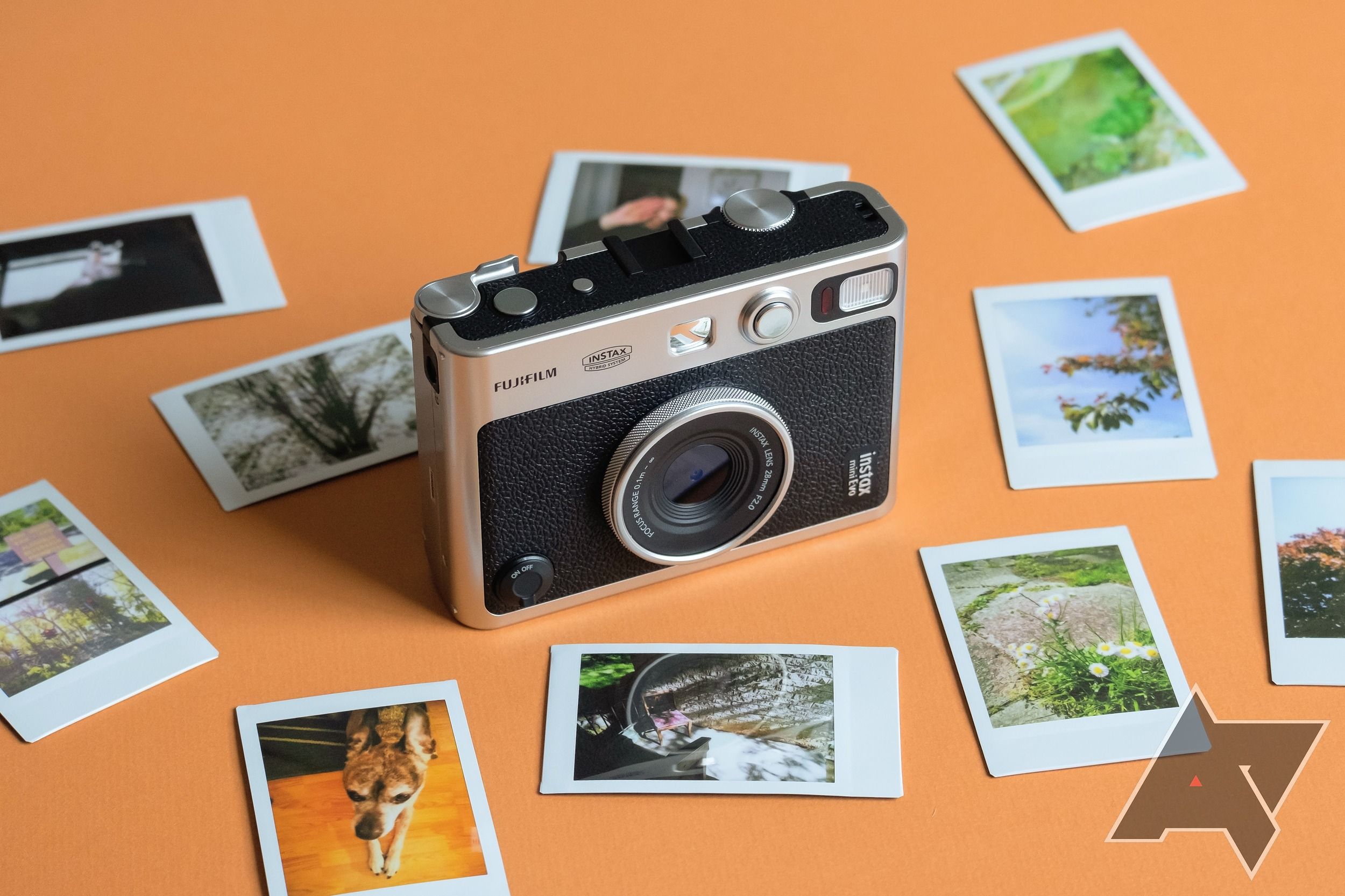
Hands-on: The Fuji Instax Mini Evo instant camera is as fun as it is impractical
Sure is pricey, though
In other highlights, the Mini Evo supports microSD cards and third-party accessories.
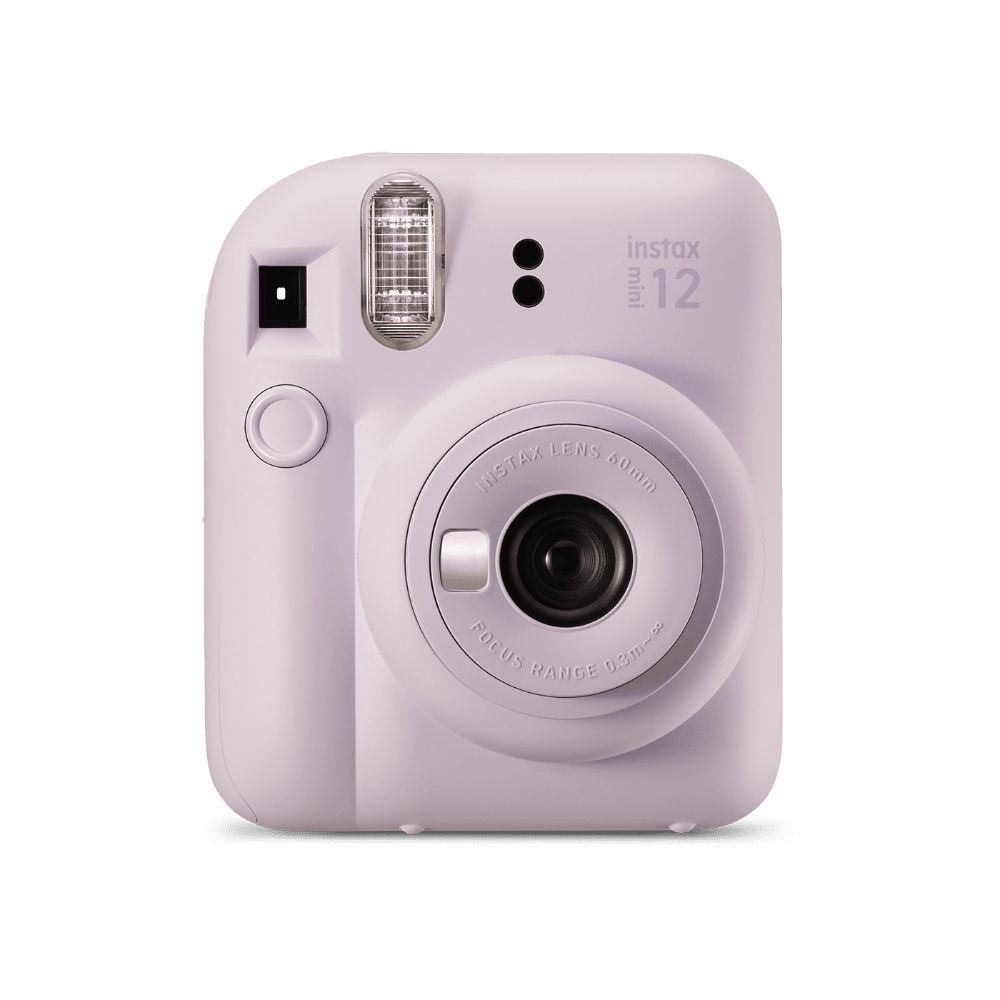
Fujifilm Instax Mini 12
Point and shoot
The Instax Mini 12 is a solid entry-level instant camera for beginners. You frame the shot, capture it, and get the print. You can even shoot selfies with it.
- Easy to set up and use
- Selfie mirror and close-up mode
- Affordable
- Barebones in terms of features
The Fujifilm Instax Mini 12 is a great budget option if you want a no-frills instant camera. It’s as simple as it gets. You put the Instax film cartridge in the camera, frame the shot through the optical viewfinder, and start clicking. Whatever you click will be instantly printed and takes a couple of minutes to develop in front of your eyes.
You don’t get effects like the more expensive Mini Evo, but there is a twisting barrel around the lens to help you zoom in for better close-ups, and a reflective panel on the front to help you take selfies. That’s about it in terms of customization from the camera; the rest is up to you to frame your shot.
One helpful feature is the built-in flash to aid in low-light situations. It’s automatic and only triggers based on the ambient brightness levels. For power, the camera uses two AA batteries.
The design is a little toy-like, with plastic construction, but at least you get five color options to choose from. Lastly, like the Mini Evo, it uses the company’s Instax Mini film, which is widely available.
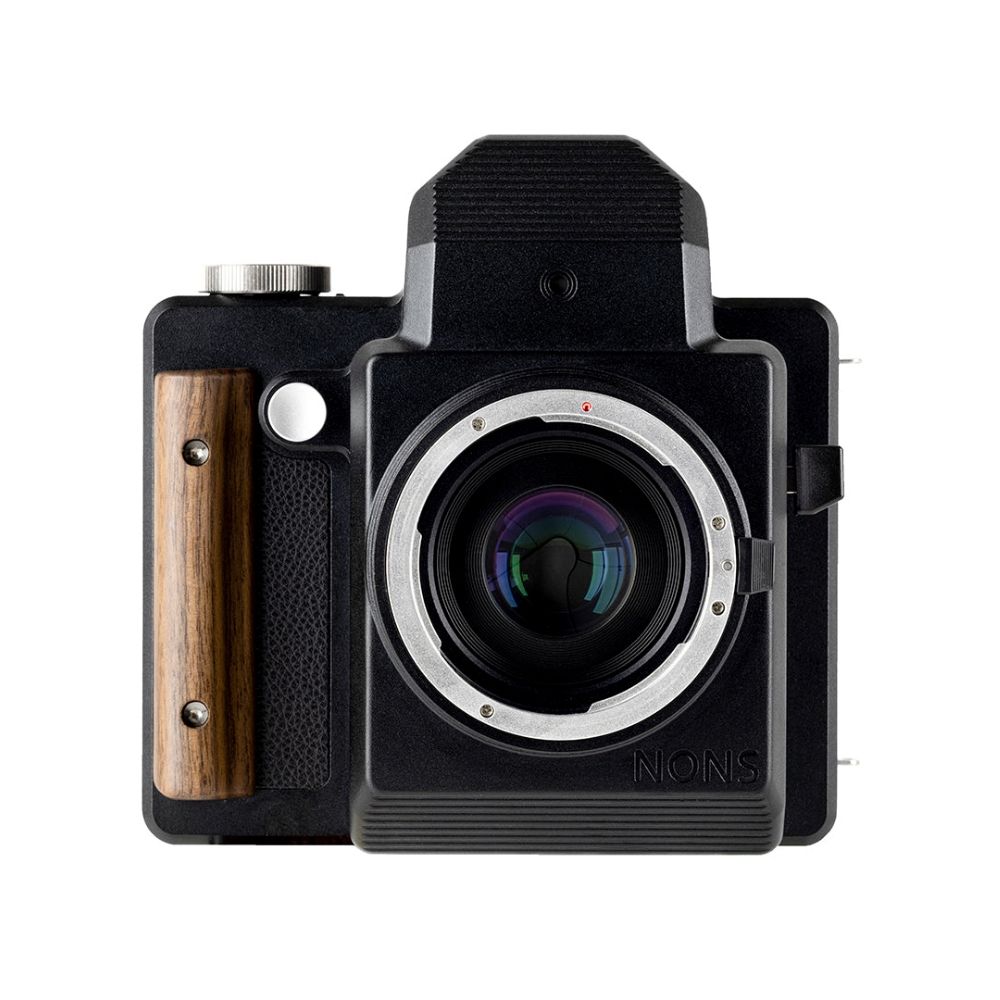
Nons SL660
A DSLR instant camera
The Nons SL660 is quite different from our other recommendations. It offers more control over your captures than any other instant camera, with a mount for interchangeable lenses.
- Manual settings for shutter speed and aperture
- Interchangeable lens mount
- Premium design and build quality
- Really expensive for an instant camera
Nons SL660 is a rare type of instant camera. It not only features manual settings for shutter speed and aperture, giving you near-complete control over your photos, but also has an interchangeable lens mount. So essentially, you get a DSLR combined with a photo printer.
It has a fantastic build quality, and the company has used a CNC anodized aluminum alloy shell. There is also a wooden grip that adds to the look and design of the camera.
While Nons sells two manual-focus EF lenses — a 35mm f/2.4 and a 50mm f/1.8 — for the camera, you can use any EF lens. Plus, as the camera has a passive EF-style mount, it can work with nearly any other pre-mirrorless lens mount, given you have the right adapter.
Unfortunately, it’s not a cheap camera, and you don’t even get a lens in the box. So, if you don’t have compatible lenses lying around, that’s an extra cost. Plus, of course, you will pay for the Instax Square format film it uses, which is larger and more expensive than the Mini format. So, it only makes sense if you have the budget and want more control over your clicks than any other instant camera can provide.
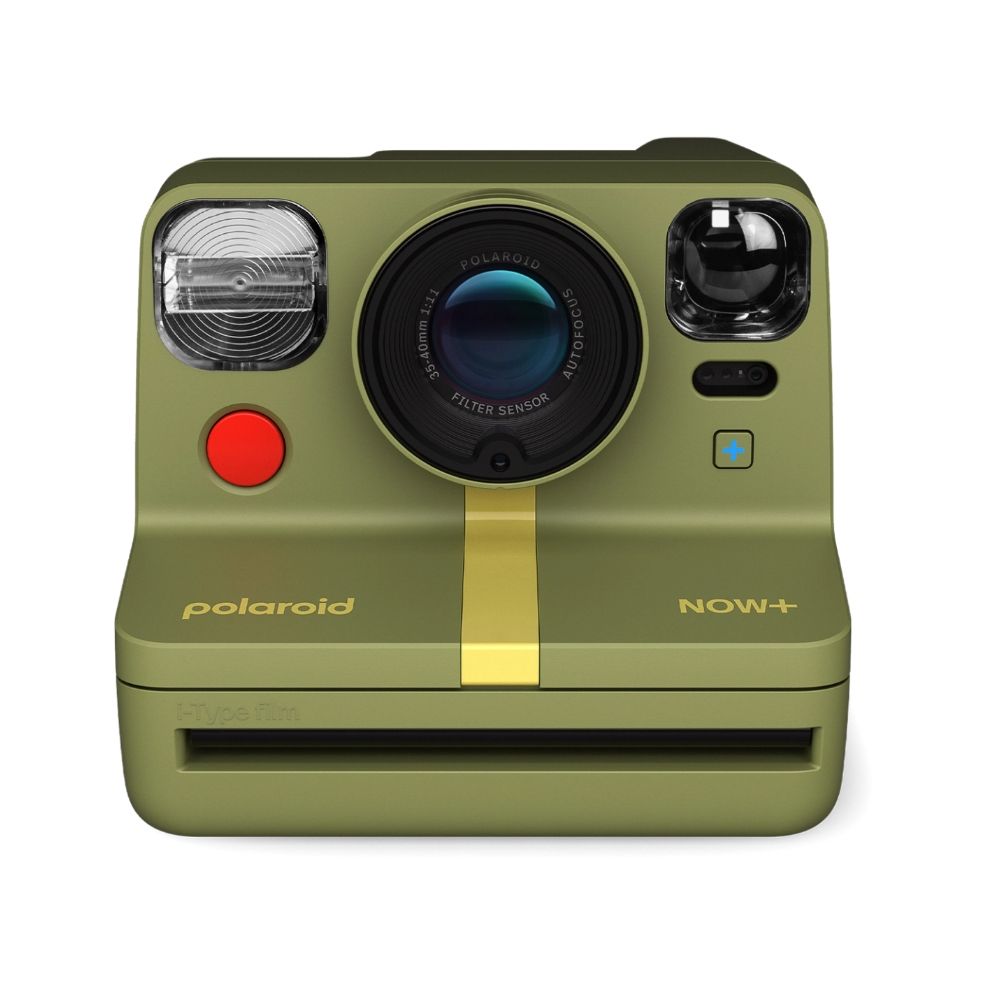
Polaroid Now+ Generation 2
Vintage design with modern features
With a design reminiscent of the older Polaroid instant cameras and vintage-style prints, the Polaroid Now+ Generation 2 is a good option if you want the old-school experience.
- USB-C port for charging
- Companion app
- Multiple colors
- Expensive film
The Polaroid Now+ is a reminder of the classic Polaroid instant cameras. It has a similar design and prints vintage-style photosbut also packs several modern features. For example, it uses a USB-C port for charging and has a companion app with a wide range of features, including a manual mode. The manual mode lets you tweak the aperture and shutter speed and set focus between 0.4-1.2m. The app can also function as a remote shutter release and supports double exposure.
Another highlight of the Polaroid offering is the included set of colored lenses, which you can snap onto the camera to make things more artistic.
In terms of image quality, the Now+ Gen 2 is a significant improvement over the Polaroid Now, mainly because it has better auto-focus. Still, the camera requires effort from your end to capture good photos. It’s easy to struggle with exposure, and the colors typically remain less saturated than what you’ll get with Instax cameras. But that’s part and parcel of the vintage Polaroid experience.
The bulky design of the Now+ also makes it less portable than our other recommendations. The Polaroid film packs also cost more than Fujifilm’s Instax films and take up to 15 minutes to develop fully.
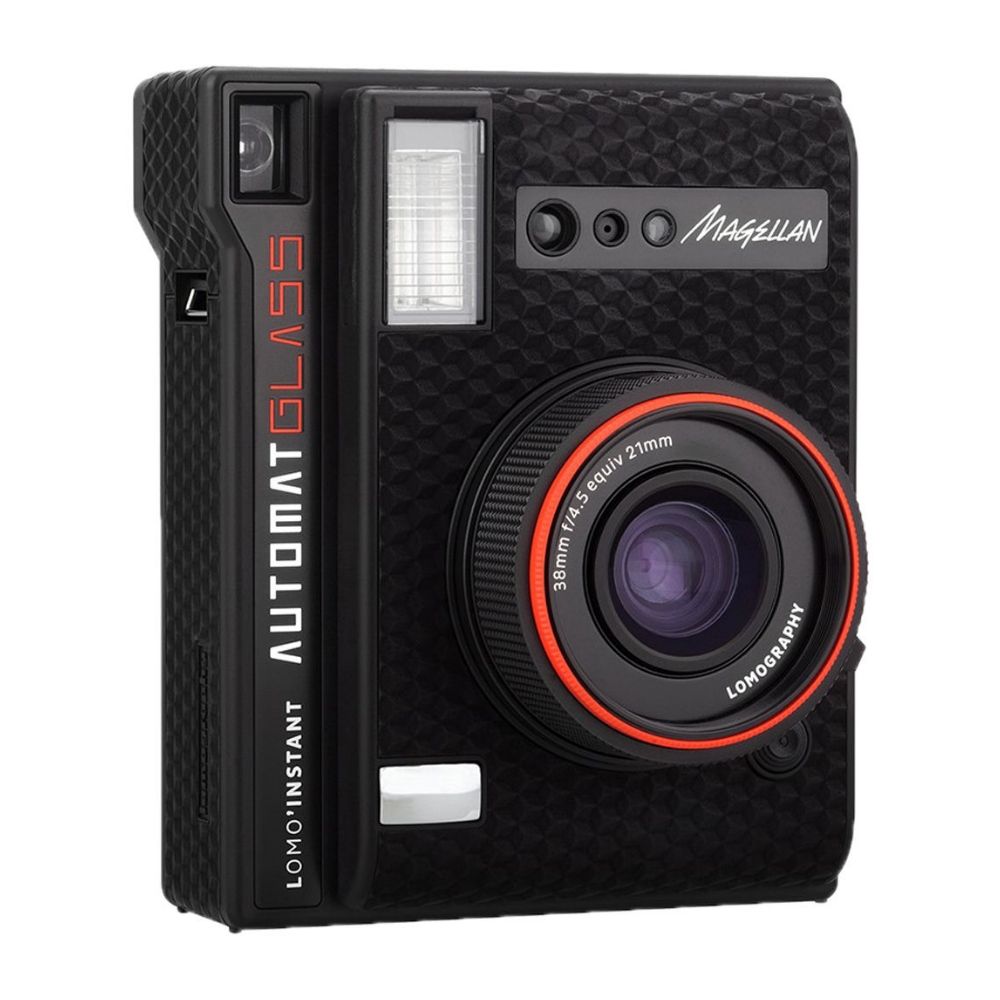
Lomography Lomo’Instant Automat Glass
Excellent low-light performance
Lomography’s Lomo’Instant Automat Glass shines as an instant shooter that can capture crisp landscapes and architecture. It’s also a good option if you want something that’s mostly automatic.
- Wide-angle lens
- Better low-light performance than other Instax cameras
- Built-in flash
- Uses CR2 batteries
Like Nons, Lomography is another company using Fujifilm’s Instax film for its own instant cameras. Its Lomo’Instant Automat Glass is a compact instant shooter that delivers crisp and clean photos. However, its stronger low-light performance and broader field of view set it apart from other Instax cameras. So, if you want to capture landscapes, architecture, or large groups of people with your instant camera, the Lomo’Instant Automat Glass is worth considering.
It packs a 38mm glass lens with an f/4.5 aperture, which supports manual focus with three set positions. Apart from focus, you get an entirely automatic operation. Still, there is plenty of creative freedom. You can take long or multiple exposures, use lens attachments, or flash color gels.
The Glass uses the Instax Mini film, which is the same film used by the Instax Mini Evo. It’s a high quality film with saturated colors.
For power, Lomography has opted to use two CR2 batteries, which is one reason the company is able to keep the size of the Glass small. Sadly, that does mean it isn’t rechargeable.
All in all, there’s plenty to like about Automat Glass, and it’s an excellent choice for anyone who is a fan of Instax film and wants to capture frames with a wider field of view.
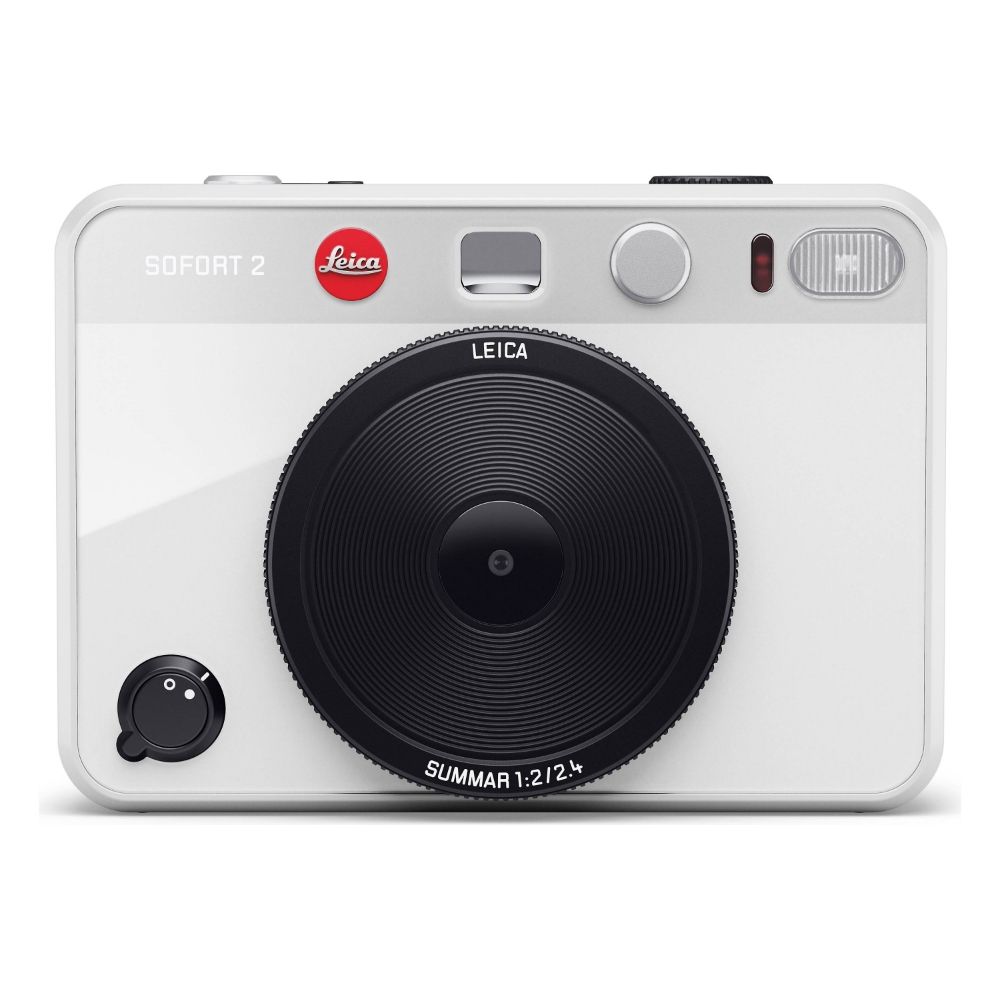
Leica Sofort 2
Fujifilm Instax Mini Evo in a new shell
Do you like the Fujifilm Instax Mini Evo but want an even better design and the Leica branding? The Sofort 2 is the answer.
- Beautiful design
- USB-C port for charging
- Can choose what to print
- Premium price for the brand name and design
- Limited internal storage
The Leica Sofort 2 is the second instant camera in the company’s history. Like its predecessor, it’s based on a Fujifilm instant camera. The Sofort 2’s reference is the Fujifilm Instax Mini Evo, our best overall pick. So, you essentially get the same performance and features but, sadly, at a more premium price.
What distinguishes the Sofort 2 from the Mini Evo is the Leica camera’s more premium design. The Sofort 2 looks elegant and is undoubtedly one of the best-looking instant cameras on the market, if not the best. Moreover, you are guaranteed to get the USB-C port for charging with the Sofort 2, something Fujifilm adopted with the release of the brown Mini Evo variant. Earlier versions had a Micro-USB port.
Otherwise, you get the same lens effects, film effects, and the same LCD display. You don’t have to print every photo you capture. You can print pictures taken by your phone on the Sofort 2 and transfer the digital copies of your camera capture to your phone for backup or storage. Besides the tiny internal storage, the Leica camera supports microSD cards.
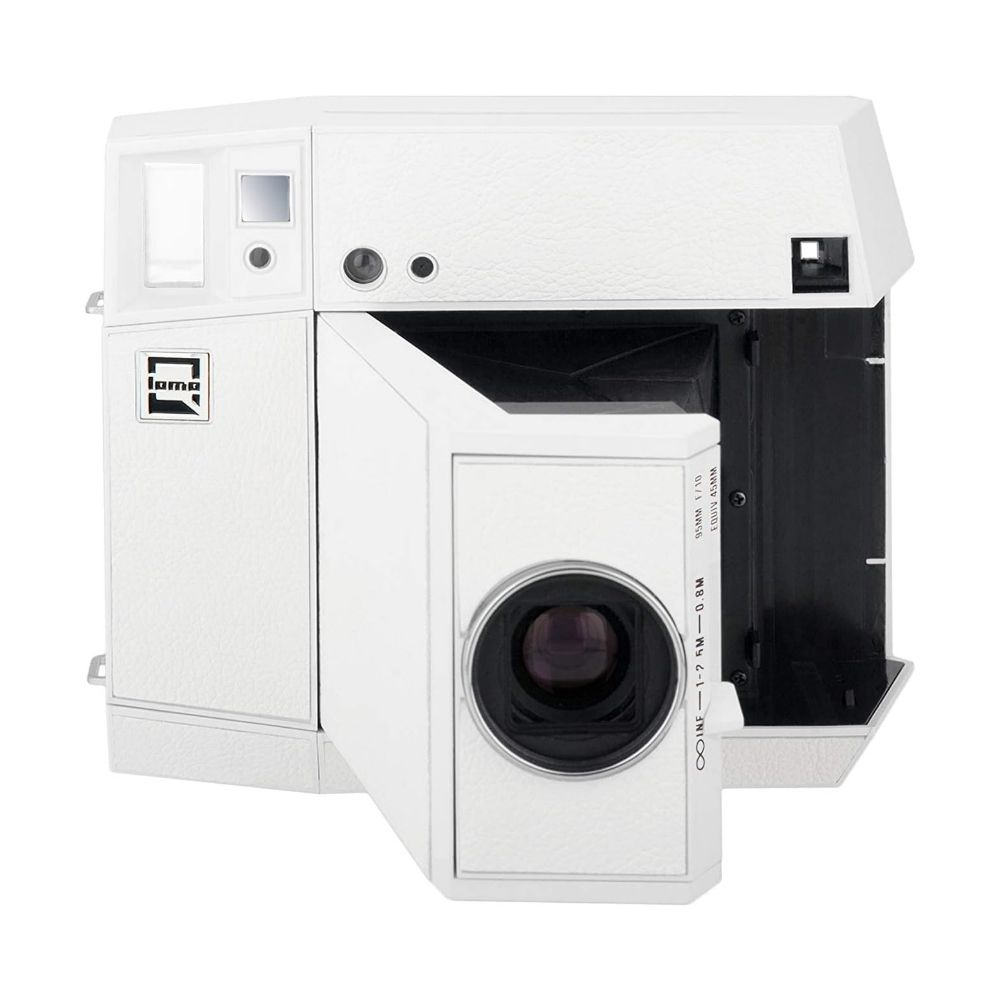
Lomography Lomo’Instant Square
Two film formats and a glass lens
The Lomography Lomo’Instant Square’s sharp glass lens lets you capture moments in great detail. It’s also a dual-format instant camera.
- Glass lens
- Folds down for storage
- Includes wireless remote
- Uses CR2 batteries
- Takes some getting used to
The Lomo’Instant Square is another solid offering from Lomography. Unlike the Automat Glass, it supports two film formats: Instax Mini and Instax Square, making it more versatile. Another significant difference between the two Lomography offerings is the design. The Square has a folding design, which slims down an otherwise larger instant camera for storage and transport.
Like the Automat Glass, the Square uses a glass lens, which helps it capture crisper images. However, its 95mm lens has a standard field-of-view. You also get a built-in flash for low-light situations, three focus zones, and a wireless remote control for the camera.
The camera supports two shooting modes: automatic and manual or bulb mode. While automatic is good for quick captures, you can use the manual mode to take unique shots as it allows you to tweak the shutter speed.
However, as the Lomo’Instant Square is a pure analog camera, there will be a learning curve, especially if you are coming from digital cameras. But once you get used to the Square, you’ill churn out some charming pictures. Don’t always expect perfect shots.
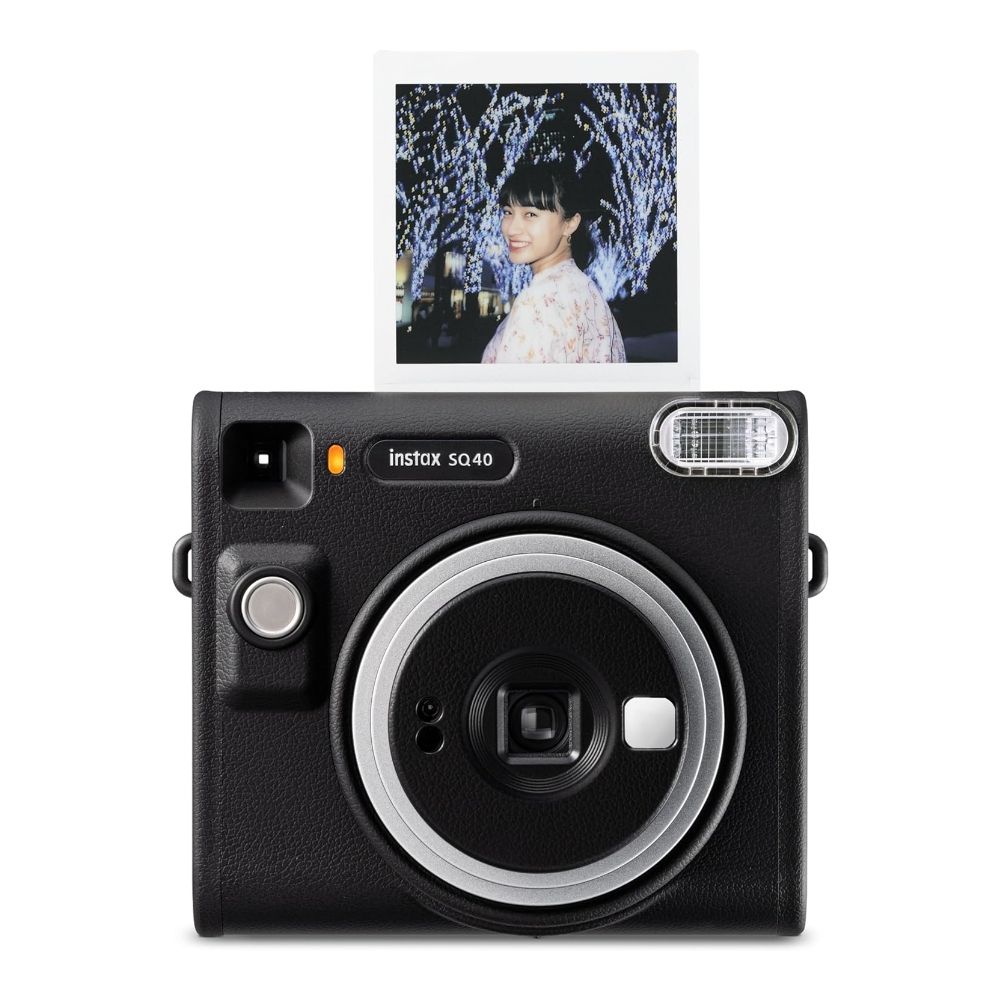
Fujifilm Instax Square SQ40
Print, peel, and treasure
Whether you’re documenting adventures or everyday life, the Instax Square SQ40 from Fujifilm delivers instant gratification with its vintage-style prints.
- Good-looking design
- Selfie mirror
- Simple operation
- No creative control
- Always-on flash
If you prefer the square film format, this good-looking camera in Fujifilm’s portfolio is an excellent option. Like the Instax Mini 12, it features a retractable lens that offers regular and selfie modes with different focus distance ranges. It’s also pretty much a point-and-shoot. So, you frame your shot by looking into the viewfinder and then push the shutter button to capture and print.
Another highlight is the built-in flash for dimly lit situations. However, it’s always triggered regardless of the lighting, so you cannot turn it off unless you physically cover it. The camera uses two CR2 batteries for power, which should last about 300 shots.
Like other Instax cameras, the SQ40 prints have a vintage aesthetic and look good. However, as the camera uses an optical-grade plastic lens, the SQ40 results fall behind the Lomo’Instant Square in terms of detail and contrast because the Lomography offering has a glass lens.
Otherwise, the Instax Square SQ40 is a solid instant camera with a grown-up look and simplicity of use.
Cherish special moments with top instant cameras
Instant cameras have a charm of their own. You’ll be hard-pressed to get the same aesthetic with your smartphone or a modern digital camera. We’re fans of Fujifilm’s Instax Mini Evo because it offers an instant camera aesthetic with many modern conveniences. Its hybrid nature also makes it versatile and gives you more control over what you print or want to keep as a digital copy. You can also consider the Leica Sofort 2, which has the same internals and performance as the Mini Evo but with a different and more premium design. But, of course, you will have to shell out significantly more for it.
But if you would rather lose control in favor of simplicity or simply want to pay less, it’s hard to go wrong with Fujifilm’s Instax Mini 12. It’s as point-and-shoot as it gets with instant cameras. It uses the same film as the Mini Evo, and a couple of AA batteries will help you take around 100 shots. You also get a funky and toy-ish design with multiple color options.
Finally, the Nons SL660 is suitable for folks who want DSLR levels of control and don’t have a problem paying a premium for it. The SL600 is quite different from our other recommendations as it has an interchangeable lens mount and manual settings for shutter speed and aperture.

Fujifilm Instax Mini Evo
Balancing analog with digital
The Fujifilm Instax Mini Evo is an excellent hybrid instant camera that combines modern conveniences with a retro design. It’s perfect if you aren’t ready for a full analog experience.




